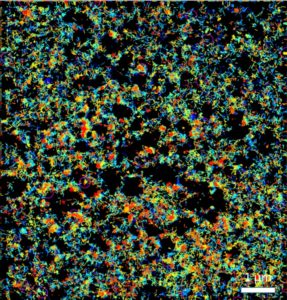Georgy Andreyevich Nosov
Elizaveta Kozlikina
Denis Tulinov
Maria Sorokina
We are studying different methods of the flexible traces fabrication. As for conductive materials we are using gold, platinum and carbon materials (graphene, carbon nanotubes) while the PDMS is used for the base layer and dielectric top coating. We are working on the optimization of the traces microtopology to achieve better electrical and mechanical properties and also the optimization of batch-fabrication technology of the low-cost implantable devices is among our goals.
Currently, we obtained data on the clustering of presynaptic active zone proteins and the dynamics of clusters in response to stimulation and synaptic activity, as well as the influence of induced oxidative stress on the dynamics of synaptic compartments. We are developing microelectrodes for induced synaptogenesis using synaptic adhesion proteins.


LIFT Center LLC
Address: 121205, Moscow, territory of the Skolkovo Innovation Center, Skolkovo, Moscow.
Skolkovo Innovation Center,
ul. 5 Nobel str.